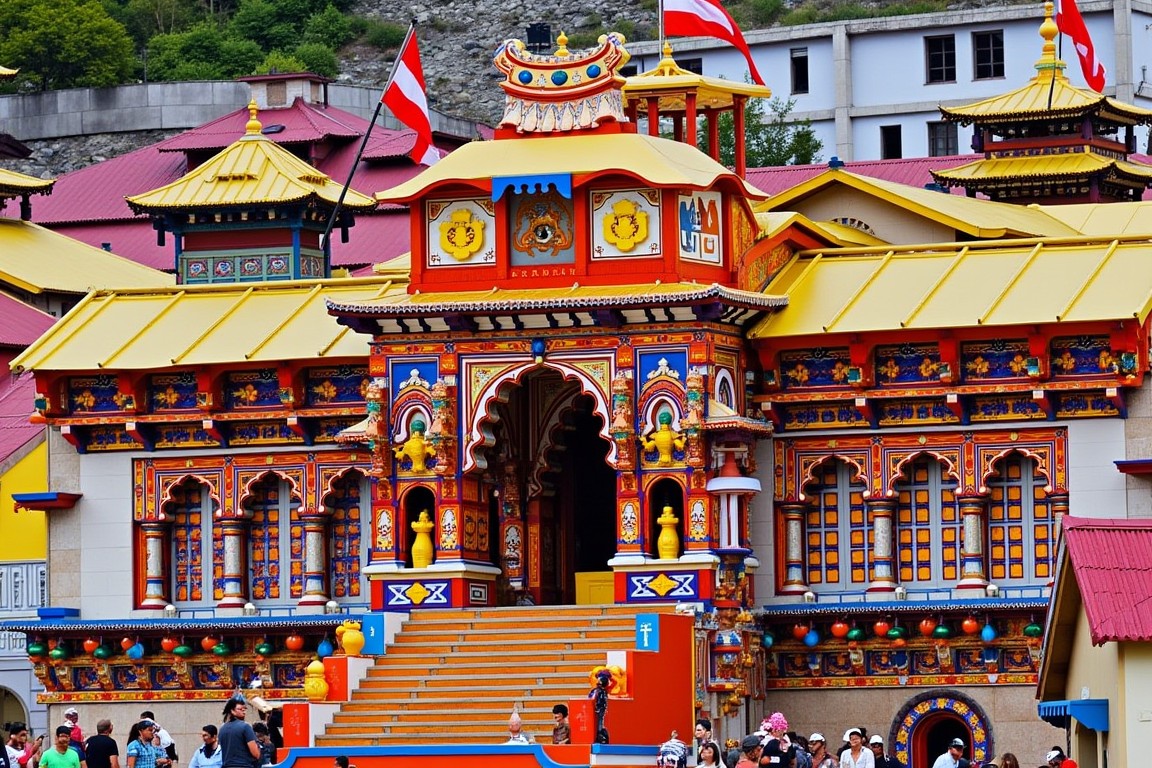Badrinath, nestled amidst the snow-capped peaks of the Himalayas, is not just a destination; it’s an experience. A sacred abode of Lord Vishnu, this temple town in the Chamoli district of Uttarakhand beckons millions of pilgrims every year. But what makes Badrinath so special in the spiritual landscape of India? Let’s embark on this soul-stirring journey to find out.
Significance of Badrinath in the Char Dham Yatra
The Char Dham Yatra, a spiritual quest that every devout Hindu aspires to undertake, comprises four sacred shrines – Yamunotri, Gangotri, Kedarnath, and Badrinath. Each of these sites holds its unique charm and spiritual significance. Badrinath, dedicated to Lord Vishnu, is often considered the crown jewel of this pilgrimage. As the final stop in the Char Dham Yatra, it symbolizes the culmination of a pilgrim’s spiritual journey and the attainment of moksha or liberation.
The Mystical Beauty of Badrinath
Badrinath is not just about spirituality; it’s a visual treat for nature lovers.
Natural Surroundings and Landscapes:
The town is cradled by the majestic Nar and Narayan mountain ranges. The pristine Alaknanda River flows beside the temple, adding to its ethereal beauty. The serene environment, coupled with the spiritual energy of the place, offers a unique experience of inner peace and enlightenment.
Snow-Capped Peaks and Serenity:
The towering Neelkanth peak stands as a sentinel, watching over the temple town. Its snow-capped peak, especially during sunrise, is a sight to behold. The tranquility that one feels in the presence of these mighty Himalayan ranges is unparalleled.
Rivers and Waterfalls:
Vasudhara Falls, located a few kilometers from Badrinath, is a must-visit destination. The cascading waters from a height of about 400 feet, set against the backdrop of the magnificent Himalayas, is a sight that captures the essence of nature’s grandeur.
Historical Background
The history of Badrinath is as rich and varied as its natural beauty.
Origins of Badrinath Temple:
Legend has it that Lord Vishnu meditated under the Badri tree, giving the place its name. The temple, believed to have been established by Adi Shankaracharya in the 8th century, stands as a testament to the deep-rooted spiritual traditions of India.
Legends and Myths Associated with Badrinath:
Numerous legends surround this sacred site. One popular belief is that Goddess Lakshmi transformed into the Badri tree to provide shade to Lord Vishnu during his meditation. Another tale speaks of the sage Narada attaining enlightenment here.
Historical Evolution of Badrinath as a Pilgrimage Site:
Over the centuries, Badrinath has evolved from a remote hermitage to one of the most revered pilgrimage sites in India. The temple has witnessed the rise and fall of empires, natural disasters, and the ever-increasing influx of pilgrims, yet its spiritual significance remains undiminished.
Geography and Natural Beauty
Badrinath, situated at an altitude of over 10,000 feet above sea level, is a blend of spiritual and natural beauty.
Location and Accessibility:
The town is well-connected by road, with the nearest railway station being in Haridwar. Helicopter services are also available for those looking to reach the destination swiftly.
The Scenic Beauty of the Himalayas:
The panoramic views of the snow-clad Himalayas, the verdant valleys, and the clear blue skies make Badrinath a haven for nature enthusiasts and photographers.
Nearby Natural Attractions:
Mana Village, the last Indian village before the Tibet border, and Tapt Kund, a natural hot spring, are among the many attractions that beckon tourists.
Badrinath Temple: Architectural Marvel
The temple, with its intricate carvings and sculptures, stands as a testament to the architectural prowess of ancient India.
The Temple Complex
The temple complex, with its brightly colored facade, is situated on the banks of the Alaknanda River. The sanctum sanctorum houses the idol of Lord Vishnu, carved out of a single black stone.
Intricate Architecture and Sculptures
The temple walls are adorned with carvings depicting various episodes from Hindu mythology. The intricate detailing and craftsmanship reflect the dedication and devotion of the artisans.
Spiritual Significance of the Temple
The temple is not just an architectural marvel; it’s a spiritual powerhouse. The energy and vibrations that one feels upon entering the

